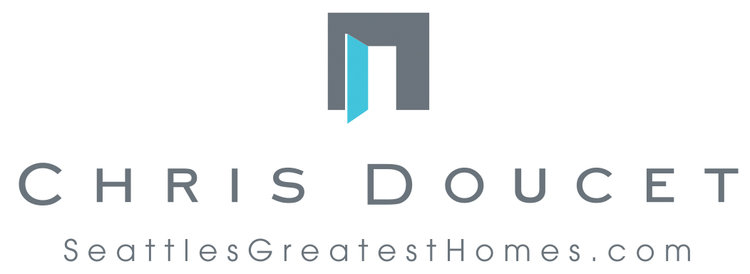Source: Realty Times
You want a comfortable, energy-efficient home—but where do you start? A home energy audit is your first step. It uncovers hidden energy drains, saves you money, and reduces your carbon footprint. Best of all? You can do a lot of it yourself.
This guide walks you through why energy audits matter, how to perform one, and the upgrades that deliver the biggest bang for your buck. Read on to learn more.
Why a Home Energy Audit is Worth Your Time
Think of your home as a system. If one part leaks energy, the rest works harder to compensate. That means higher bills and unnecessary wear on appliances.
Luckily, a professional home energy audit carried out by certified experts and/or companies (or even a do-it-yourself (DIY) check) pinpoints the following issues:
• Air leaks that let heat or air conditioning (AC) to escape;
• Poor insulation which drives up total household energy use;
• Old appliances guzzling extra power;
• Inefficient lighting - adding to already sky-high costs; and so much more.
Did you know that fixing the abovementioned issues can slash your energy bills by up to a third—sometimes even more more. Plus, many upgrades pay for themselves in just a few years.
How to Conduct a DIY Home Energy Audit
You don’t always need a pro. A thorough DIY audit takes a few hours and requires minimal tools to perform. Here’s how to do it right.
Step 1: Locate Air Leaks
Air leaks are silent energy thieves. Check the following parts of your home:
• Windows and doors (hold a lit incense stick near edges—if smoke wavers, you’ve got a leak);
• Electrical outlets and switches on exterior walls;
• Attic hatches, vents, and ductwork; and the like.
Seal gaps with weatherstripping, caulk, or spray foam for an instant efficiency boost.
Step 2: Inspect Insulation
Poor insulation forces your at-home heating, ventilation, and air conditioning (HVAC) system to overwork. Key spots to check include your attic (should have at least 12–15 inches of insulation), exterior walls (tap them—hollow sounds may mean insufficient insulation), and at-home basement and crawl spaces (look for exposed gaps).
If insulation is thin or missing, consider adding fiberglass batts, blown-in cellulose, or spray foam.
Step 3: Evaluate Heating and Cooling Systems
Your HVAC system eats up nearly half of your energy bill. Ask yourself the following questions:
• Is your furnace or AC over a decade or more old? (Upgrading to the latest energy-efficient models can save you about a fifth on your energy consumption costs.)
• Are filters dirty? (Replace them every month or so depending on the amount of accumulated dirt present.)
• Are ducts leaking? (Use mastic sealant—not duct tape—to fix them.)
A quick self-inspection on your heating and cooling systems at home can do wonders.
Step 4: Check Appliances and Lighting
Old appliances are energy hogs. Look for refrigerators, washers, and dryers with low or outdated energy savings ratings, incandescent bulbs (swap them for LEDs, which use a whole lot less electricity), and phantom loads (unplug devices or use smart power strips).
Step 5: Examine Water Heating Efficiency
Water heaters account for a considerable percent of your home's energy use. Improve efficiency by lowering the thermostat to 120°F, insulating exposed pipes and the tank (if you're using an electric unit), and fixing leaky faucets because they waste hundreds of gallons a year if left unchecked.
With the abovementioned pointers, you're more than ready to do a DIY home energy audit sans an expert's help.
When to Call a Professional Energy Auditor
A DIY audit helps, but a pro brings expertise and high-tech tools like thermal cameras to spot hidden heat loss, blower door tests to measure air leakage rates, and combustion analyzers that check your furnace's safety.
Consider hiring an auditor if you suspect major air leaks or insulation gaps at home, your energy bills are sky-high with no obvious cause, and you’re planning big renovations and want expert advice.
Worry not; many utilities offer discounted or free audits—check with your provider.
Top Money-Saving Tips You Should Consider
Lock in savings year-round at home with the following energy-saving tips:
• Use energy monitoring tools such as smart plugs to track real-time usage of devices and whole-home energy monitors to identify hidden drains.
• Optimize your thermostat settings for different seasons of the year. During winter, set your thermostat at 68°F when awake and lower when asleep/away. On the other hand, set your thermostat at 78°F when home and higher when out during the summer. If you're able to, you can switch to smart thermostats to save yourself from the hassle of doing manual adjustments.
• Maintain your HVAC system. Schedule annual professional tune-ups, clean vents and ducts, and keep outdoor units free of debris.
• Harness natural heating and cooling at home; open south-facing curtains in winter for solar heat and close blinds in summer to block heat. Finally, use ceiling fans to your advantage.
Aside from the above mentioned, did you know that there are financial rebates available that you can utilize? Read on to learn more about them.
Financial Incentives and Rebates
Want to cut upgrade costs from the findings of your home energy audit? Take advantage of government tax credits like tax breaks for installing solar panels or heat pumps, utility rebates for efficient appliances or new insulation, and financial support programs from non-profits.
Check your local energy office or top energy sites for current deals available.
Closing Words
A home energy audit isn’t just about saving money—it’s about living smarter. Fixing leaks, optimizing systems, and using energy wisely means lower bills, better comfort, and a lighter environmental footprint.
Start with a DIY check, then consider a pro audit if needed. Every upgrade, big or small, adds up. Your home—and wallet—will thank you.
Source: Realty Times

